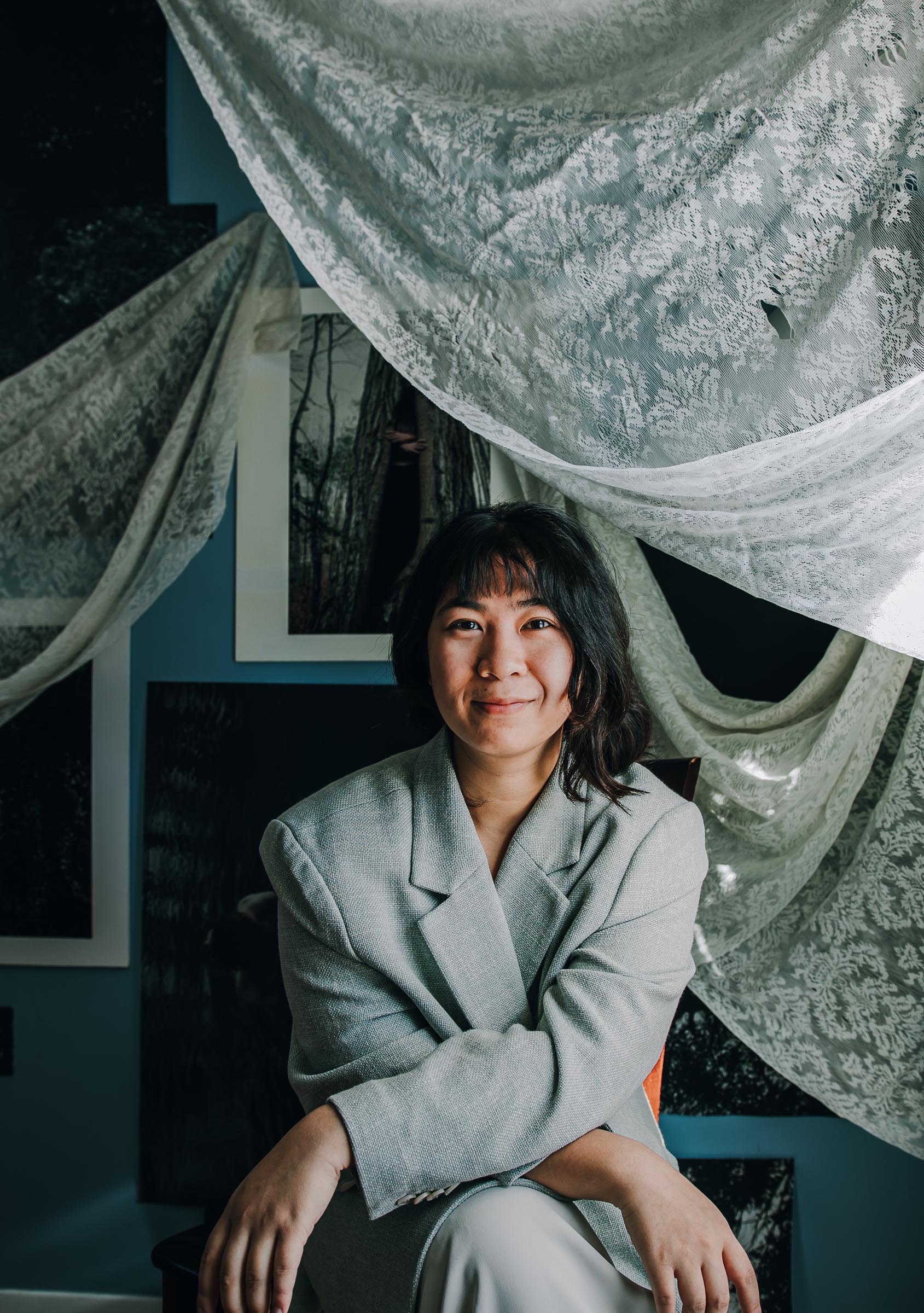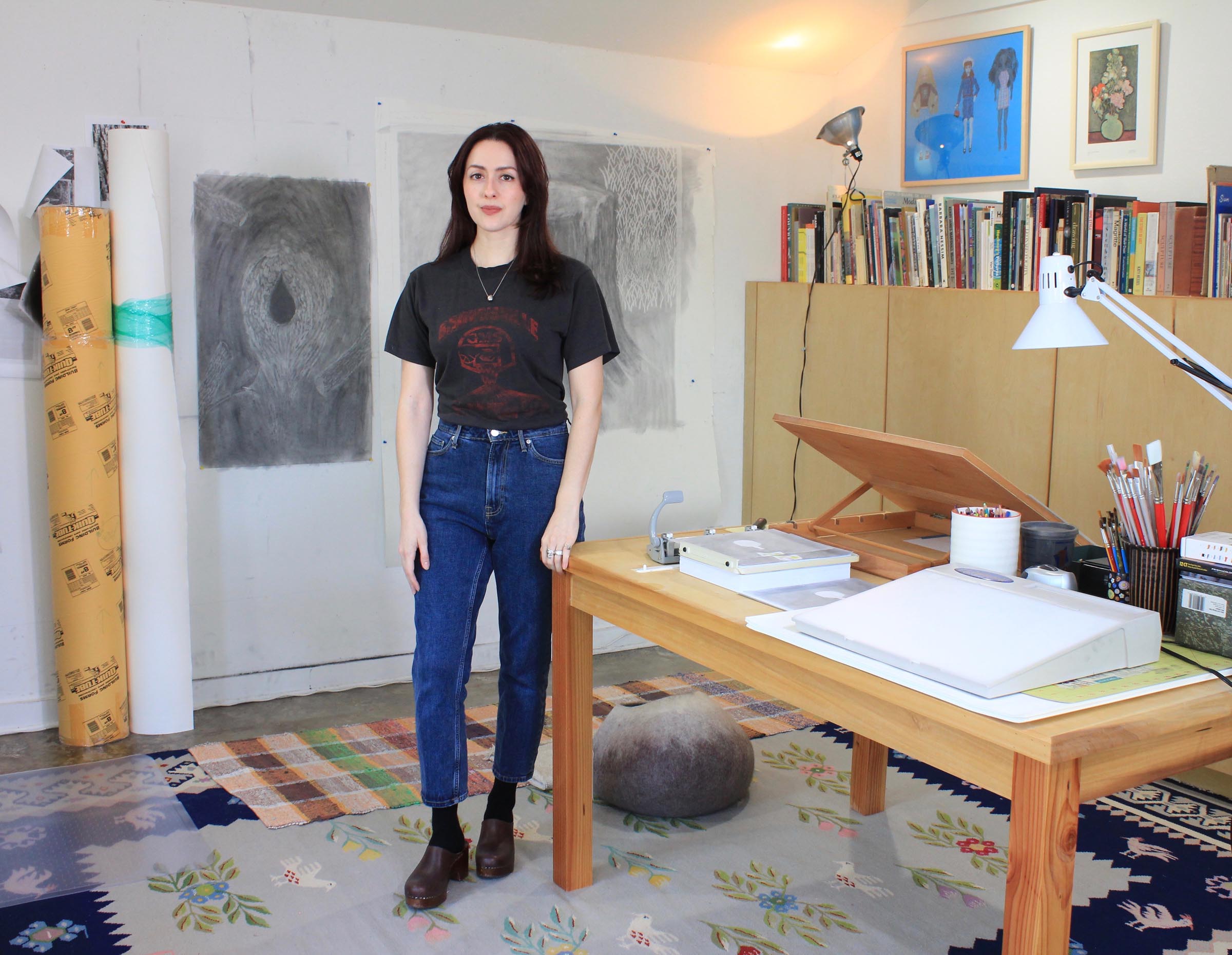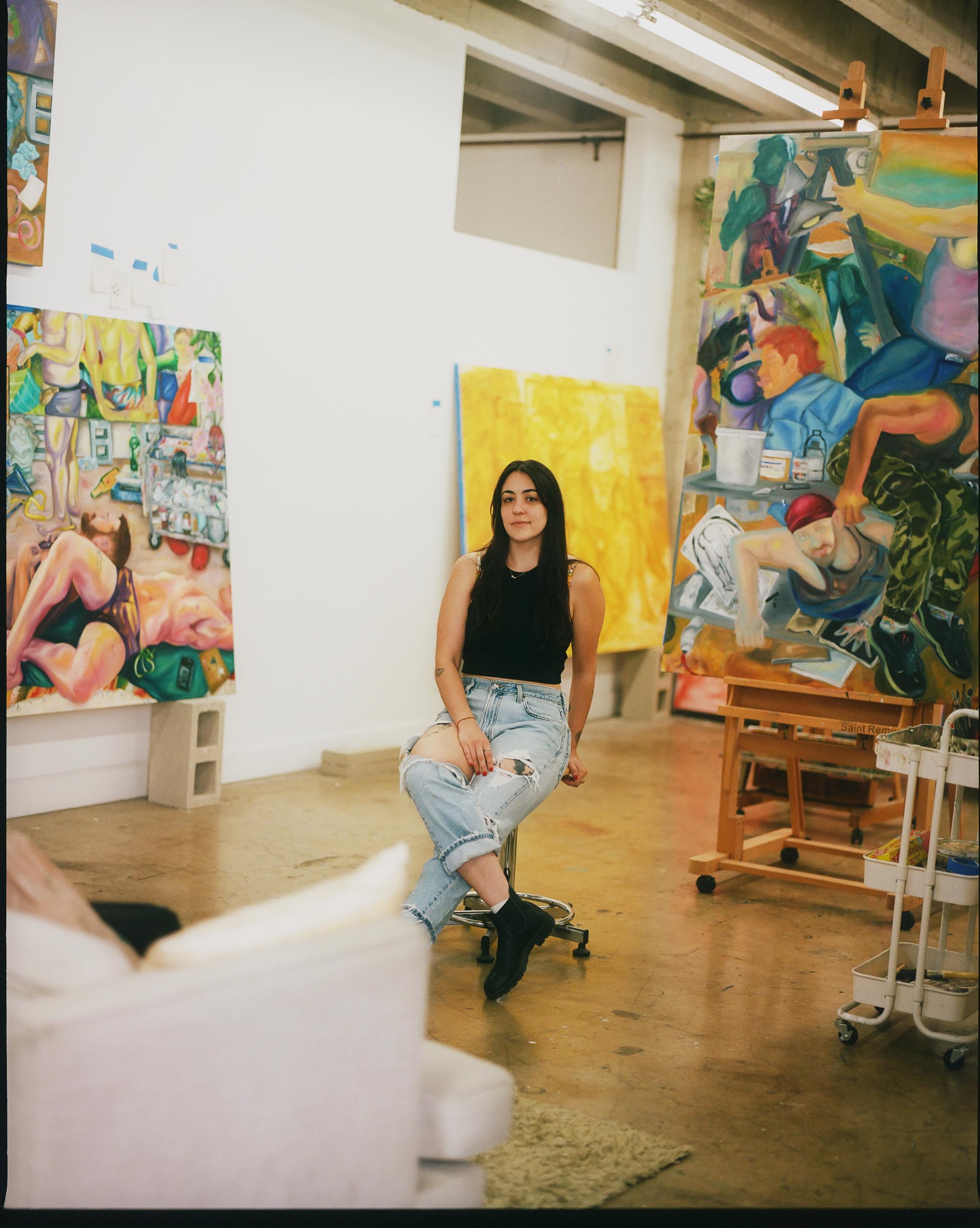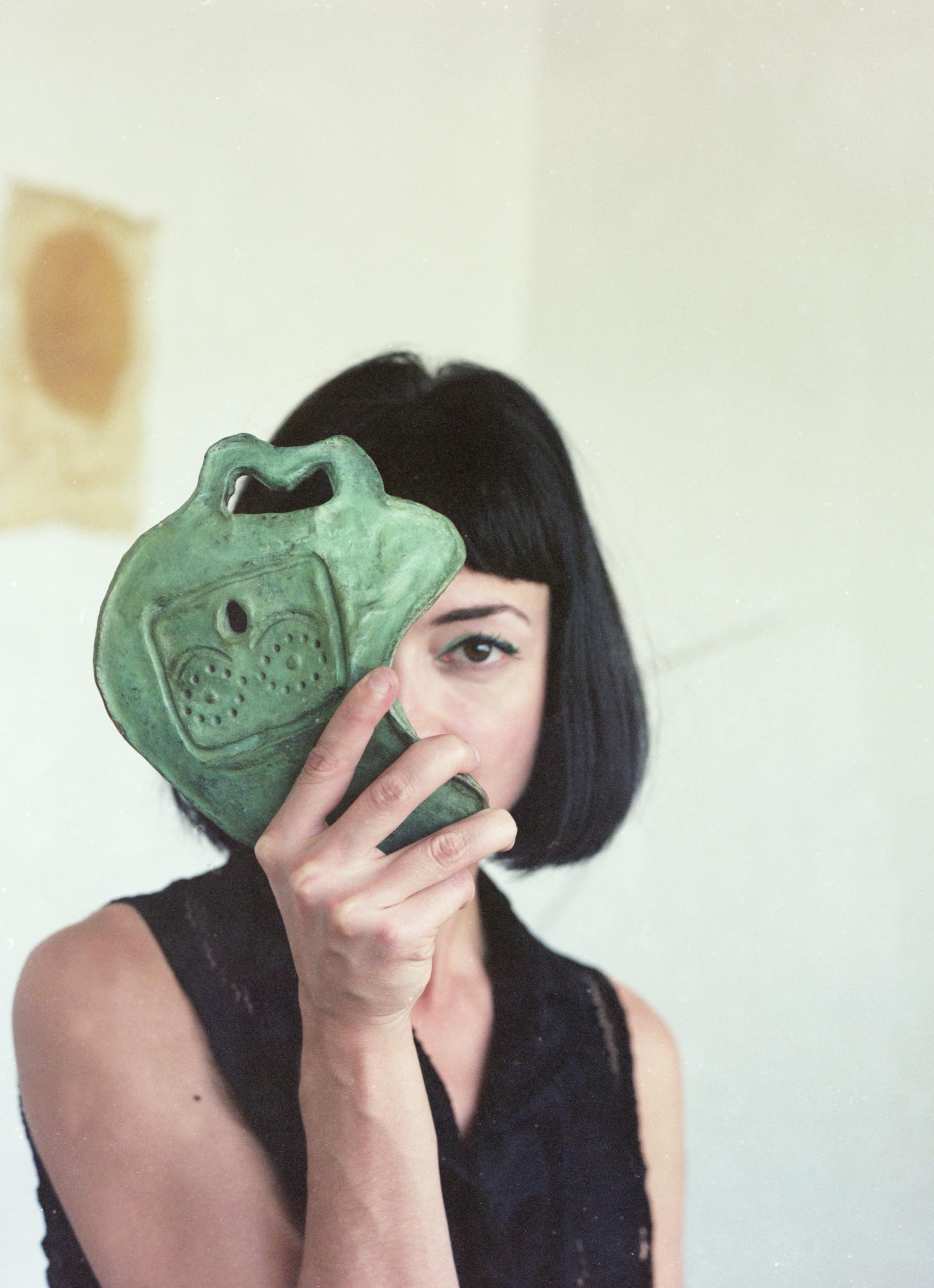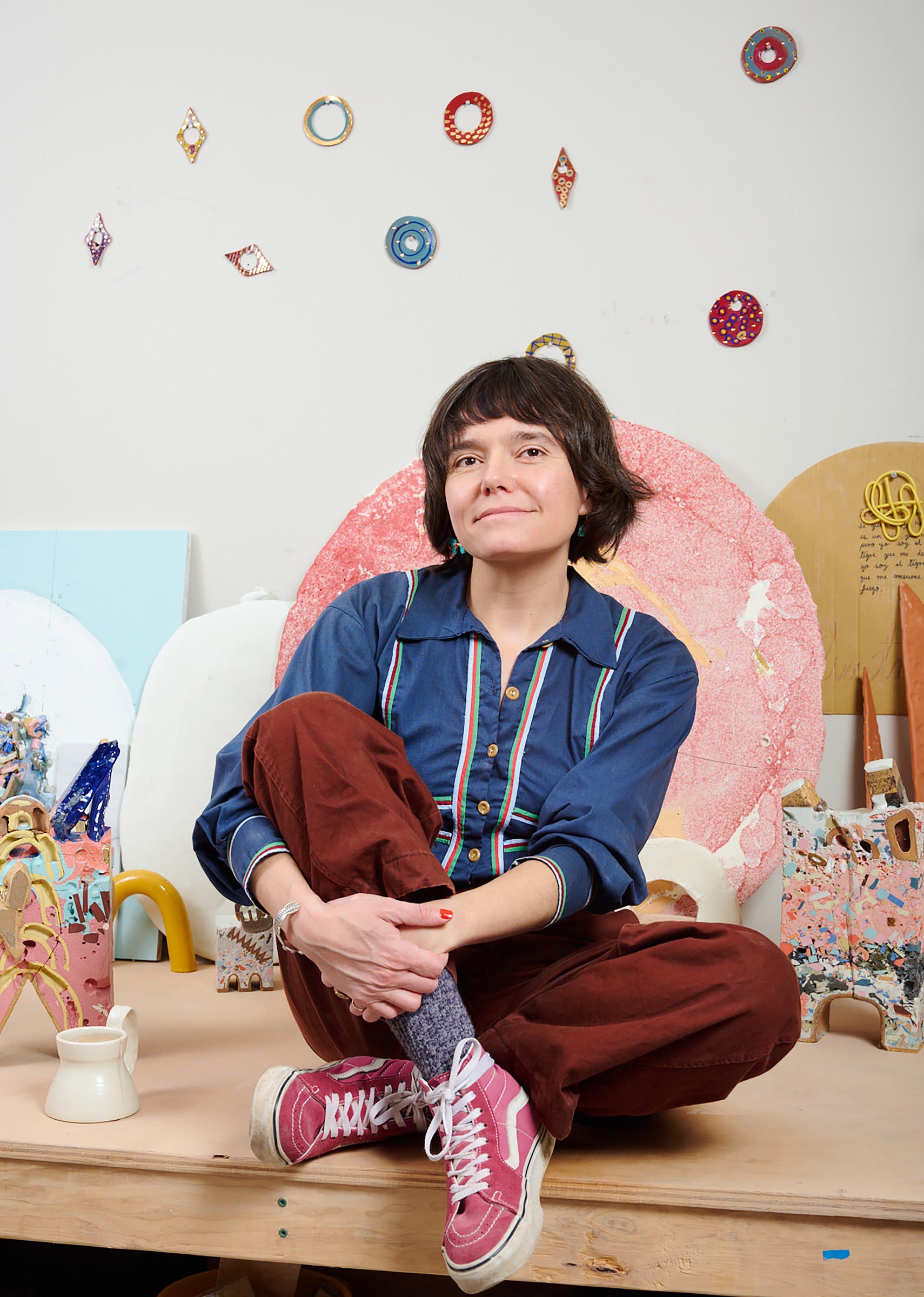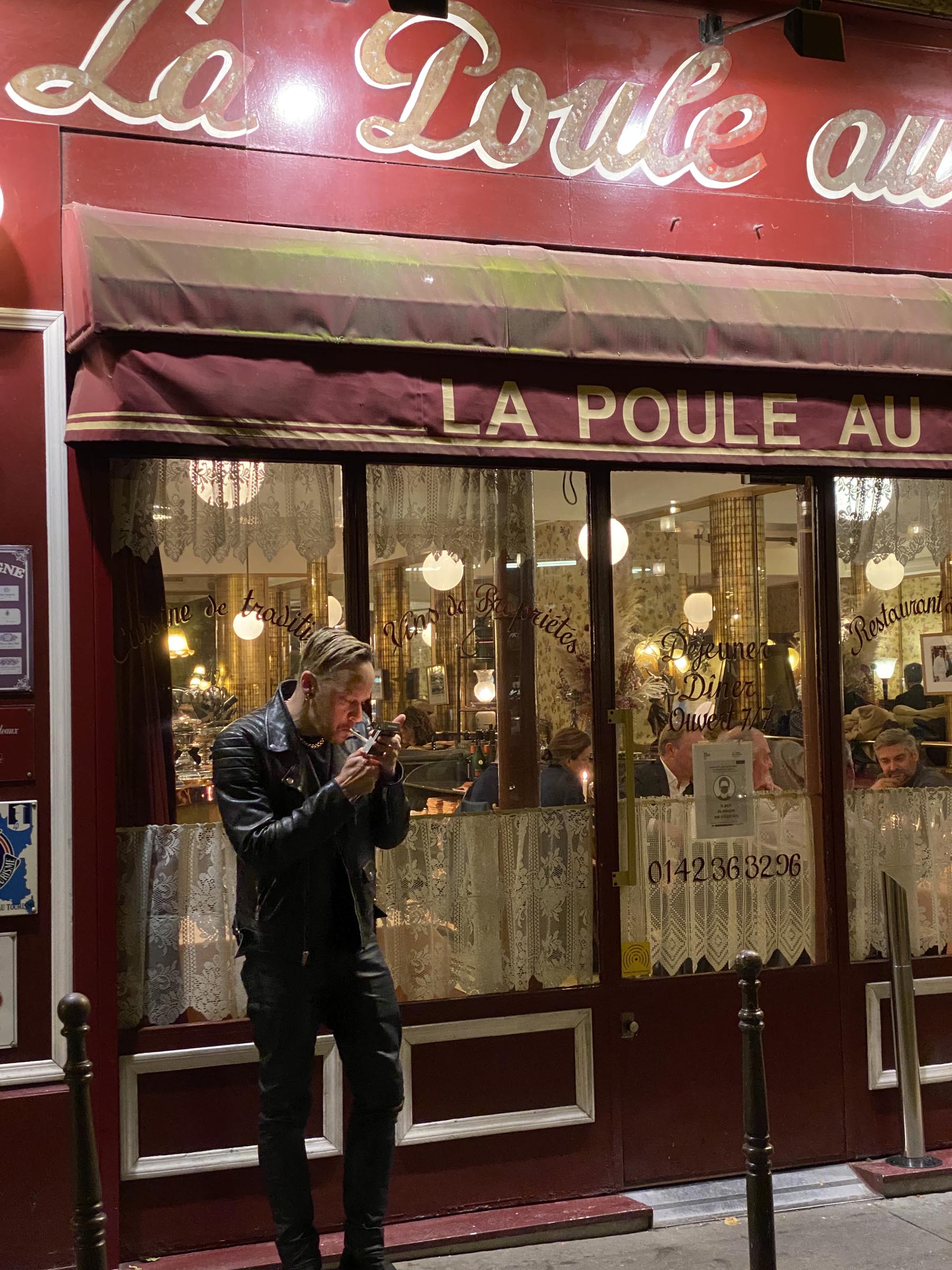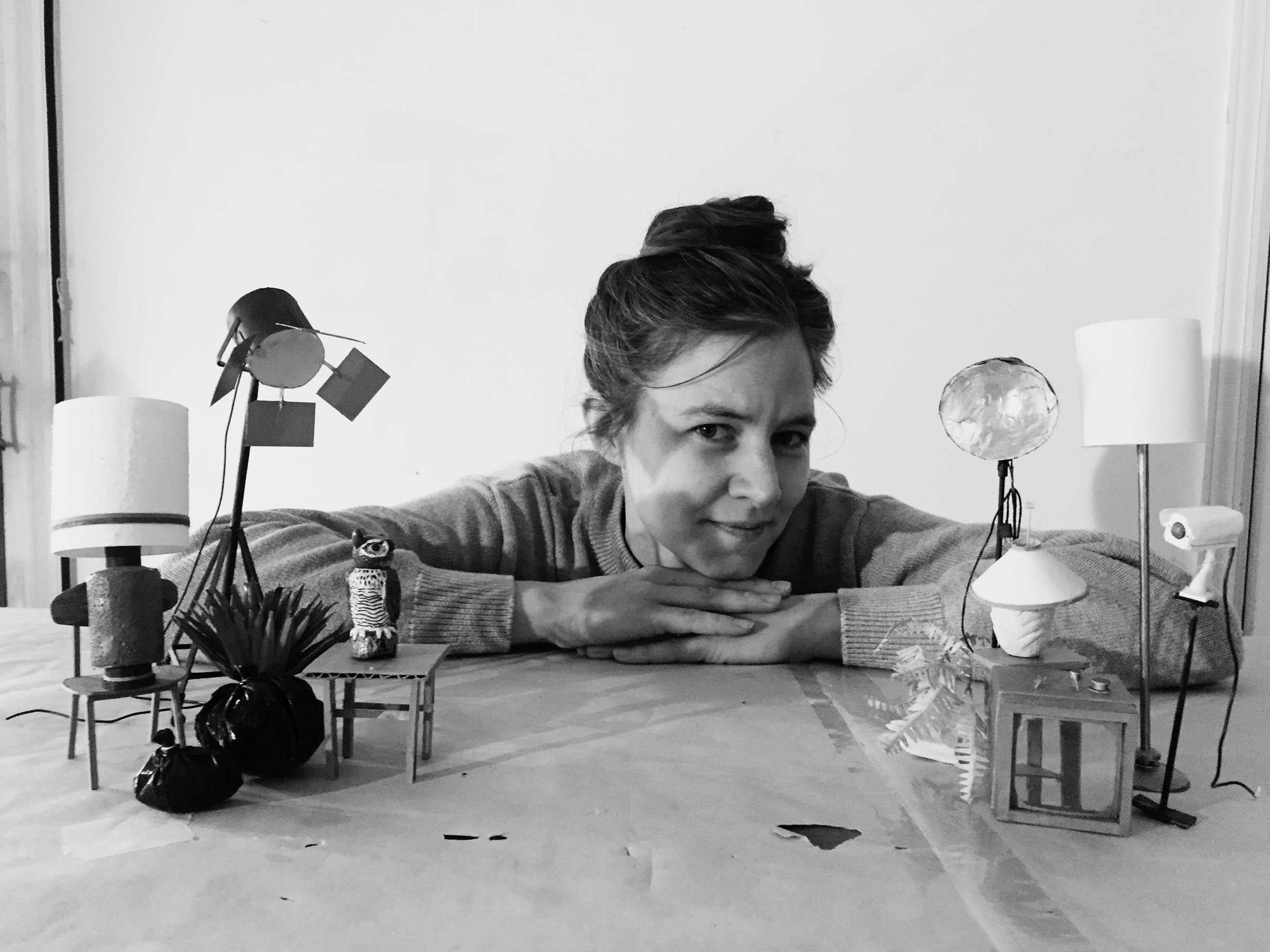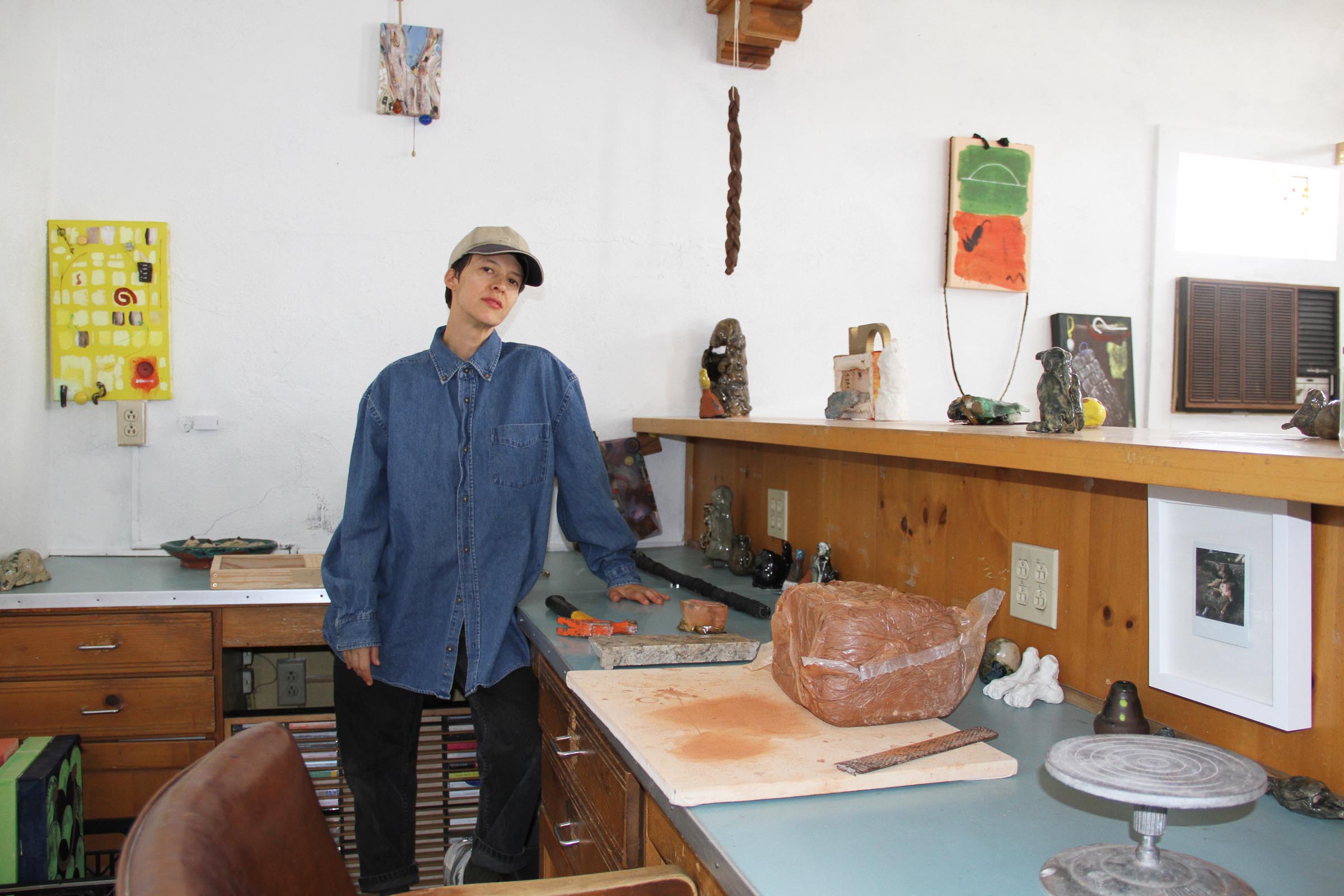How did you get into making art?
My interest in ‘making things’ traces back to to my upbringing. As a child, I spent countless hours in the workshop of my father who was a skilled carpentar. I absorbed valuable lessons about patience, the importance of craft, the power of vision, and the step-by-step process of bringing an idea to fruition. It was a great foundation for my artistic journey.
Upon entering high school, my creative interests deepened and in art classes my fascination with art flourished. My teachers noticed my efforts, and with their encouragement I chose art as my path foward.

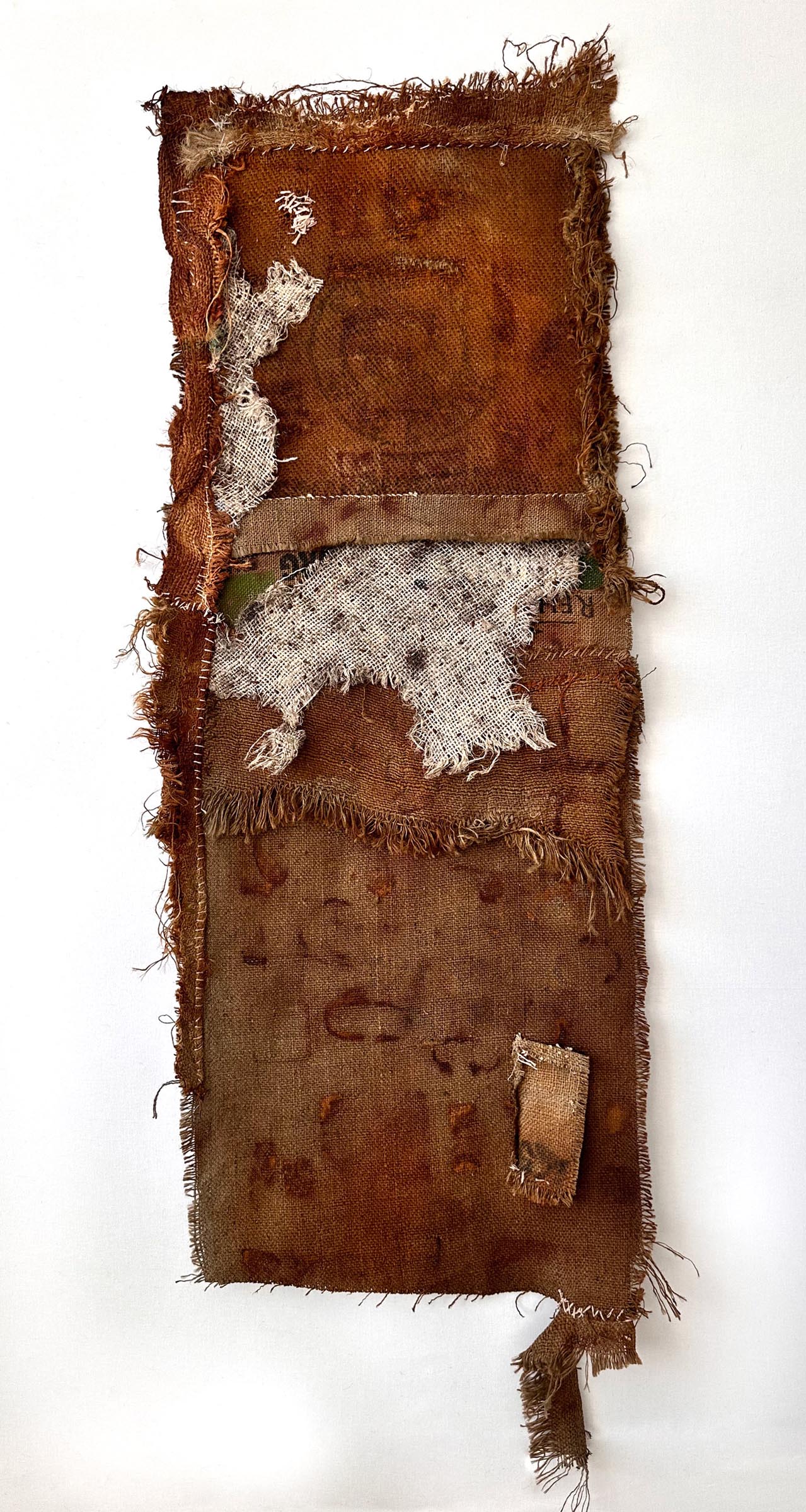
What are you currently working on?
I am currently preparing for an upcoming exhibition scheduled for the end of April. My work will be shown in a historical building erected in 1857, characterized by beautiful white stone columns and arched ceilings.
This distinct setting has presented an exciting challenge for me, and I’ve been tasked with creating larger burlap pieces that will hang in space, suspended from the ceiling. This marks a departure from my usual work, offering me an opportunity to explore the use of transparency and space.
In addition to these suspended pieces, I am working on several large-scale wall pieces. These will include a few additions to my ongoing ‘Treasure Tower Series’ will round out the rest of the exhibition.
Ultimately, I view my work as a means of understanding, processing, and, in my own way, repairing the inherent suffering present in all our lives.
Janet Jaffke
What inspired you to get started on this body of work?
I have been interested in the prospect of working on a larger scale, aiming towards potential future installation projects. This current invitation serves as an entry point for expanding my creative vision. My artwork consistently delves into reflections on my unique life experiences and, more subtly, my subconscious reactions to the prevailing traumas in the world. Ultimately, I view my work as a means of understanding, processing, and, in my own way, repairing the inherent suffering present in all our lives. My ongoing Treasure Towers reflect a buddhist concept that all people, no matter their satatus or situation, all have a treasure within. Each persous can polish their treasure to create a shining life fulfilling their highest potential.


Do you work on distinct projects or do you take a broader approach to your practice?
Typically my work is driven by the materials I surround myself with. I like to work from the position of abstract experimentation and usually one piece leads to the next. I might choose a size or fromat for a group of work but generally I don’t have a distinct project in mind at the beginning. It’s only when the piece approaches the finish line that I understand it’s meaning.
There is one exception to this approach and that is the Treasure Tower Series. These are ongoing and eventually I envision many of them hanging together in an installation format.

What’s a typical day like in your studio?
Most days, I arrive in the studio mid-morning, grab my coffee, check emails, and then transition to the ‘design’ area of the studio. If there are materials scattered from the previous day, I tidy up as I assess what is in progress and what I want to tackle that day. My optimal creative energy occurs earlier in the day, so I dedicate this time to creative work, examining and evaluating work in progress—ensuring it aligns with my vision and intention. This period allows me to explore ideas, experiment with materials, craft compositions, and propel the work forward to the next stage. As the day progresses, my focus shifts to the ‘construction’ or mechanics of the work, involving tasks such as hand-stitching, painting, distressing the fabric, and addressing hanging and presentation logistics.


Who are your favorite artists?
The artist who has influenced my work the most is Alberto Burri, an Italian artist who served as a medical examiner in WWII. I am captivated by the materiality of his work and how he skillfully employs it to abstractly convey emotion.
Additionally, I find inspiration in the works of Anselm Kiefer, Ibrahim Muhama, Antoni Tàpies, and Magdalena Abakanowicz. I am drawn to these artists not only for the tone of their expression but also for their adept use of materials and the impactful scale of their creations.
Where do you go to discover new artists?
Sometimes I discover new artists by exploring current exhibitions in galleries and museums as well as through platforms like Pinterest and Instagram. Trade publications such as Surface Design Journal and Fiber Art Now are valuable sources, and I stay attuned to artists my colleagues are discussing.
Learn more about the artist by visiting the following links:
























